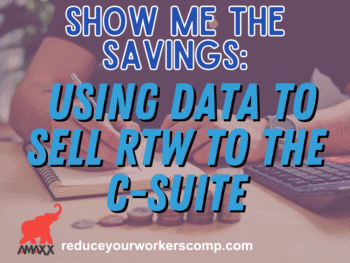Members of the claim management team need to review issues concerning vocational rehabilitation with care. This includes using its initial phases when determining eligibility for services to determine the employee’s work injury status and develop a litigation plan. Once the employee becomes eligible for services, the review process needs to continue with an increased emphasis on determining if the Plan prepared by the VOCATIONAL COUNSELOR is reasonable and then using it to move the claim forward to settlement.
Vocational Rehabilitation Plan Development
Once the employee is eligible for vocational rehabilitation services, the next step is developing a plan that will hopefully get the employee back to work in a timely and cost-effective manner. Plans submitted for review may be deemed approved if a timely objection is not made as outlined in statute or administrative rule. Never forget these jurisdictional requirements and object when necessary.
This post is one in a 4-part series:
- Using Vocational Rehabilitation to Resolve Work Comp Cases: A Primer
- Using Vocational Rehabilitation to Resolve Work Comp Cases: Eligibility For Services
- Using Vocational Rehabilitation to Resolve Work Comp Cases: Managing the Voc Rehab Plan
- Using Vocational Rehabilitation to Resolve Work Comp Cases: Dealing with Retraining
The essential components of a vocational rehabilitation plan should include the following:
- Discussion of the employee’s age, education, work history, employment with the employer, vocational interests, transferable job skills, and current and future labor market conditions.
- Information regarding the employee’s work restrictions and limitations may affect their ability to return to their pre-injury position or other jobs at the employer. If this is not possible, there should be a consideration of employment options at other employers, which requires job-seeking assistance; or
- All reasonable activities, costs, and other expenses may be required of the vocational counselor to help the employee complete the Plan.
Click Link to Access Free PDF Download
“13 Research Studies to Prove Value of Return-to-Work Program & Gain Stakeholder Buy-In”
Claim handlers and other interested stakeholders should review all Plans for completeness and accuracy. Questions raised from that review should be addressed before approving it. If there is an agreement to the Plan, any changes may require a modification process that could include litigation.
Working with the Vocational Counselor on the Plan
Members of the claim management team and other interested stakeholders should be fully engaged with the vocational counselor once a Plan is approved. When working on a Plan, an expectation is generally defined under statute or administrative rule on the frequency and content of progress reports. These reports should be reviewed immediately upon receipt.
Typical areas of tension and unnecessary litigation can happen in the following instances:
- Failure to review billing statements received from the vocational counselor during the Plan’s implementation. Never assume the charges are reasonable. Treat these statements as one would when reviewing medical records and billing statements from a health care provider;
- Timely communication with the vocational counselor. Vocational counselors generally perform their work with professionalism and in the best interests of the Plan. Claim handlers should be willing to call or email vocational counselors if they do not feel they are receiving sufficient communication;
- Responses to written job offers are regularly occurring points of contention when vocational rehabilitation services are in effect. Claim handlers should actively communicate with employer representatives to ensure these offers are well-written and complete.
It is crucial to be a fully engaged professional at all times. Vocational counselors are human too. Treat them with the same respect and dignity you would expect.
FREE DOWNLOAD: “13 Research Studies to Prove Value of Return-to-Work Program & Gain Stakeholder Buy-In”
Changing Vocational Counselors
Requesting a change in vocational counseling is always a spicy topic and a point of contention. If the vocational counselor is not advancing the file, making unreasonable requests, or becoming more of an advocate, this step should be considered. Requests to change the vocational counselor are generally evaluated on a “best interests of the parties” standard. Factors to consider when contemplating such matters include:
- Consistent and repeated failure to provide complete progress reports promptly;
- Inability to provide timely communication regarding important work injury milestones such as additional recommendations in medical care changes in restrictions, or releases to return to work without restrictions on activity; or
- Excessive costs to complete projects and a failure to act in the best interests of the Plan.
A vocational counselor needs to act professionally at all times. Actions that deviate from the trust should be addressed, and if remedial action is not taken, steps need to change the vocational counselor.
Conclusions
The goal of every vocational rehabilitation plan must be to get the employee back to work without a wage loss. Effective claim management techniques should be taken from the onset to review the Plan once submitted and object on time. It also requires high professionalism and seeks a change in vocational counseling if it is in the parties’ best interests. These steps will ensure a quick return to work and mitigate workers’ compensation expenses.

Contact: mstack@reduceyourworkerscomp.com.
Workers’ Comp Roundup Blog: http://blog.reduceyourworkerscomp.com/
©2023 Amaxx LLC. All rights reserved under International Copyright Law.
Do not use this information without independent verification. All state laws vary. You should consult with your insurance broker, attorney, or qualified professional.


















